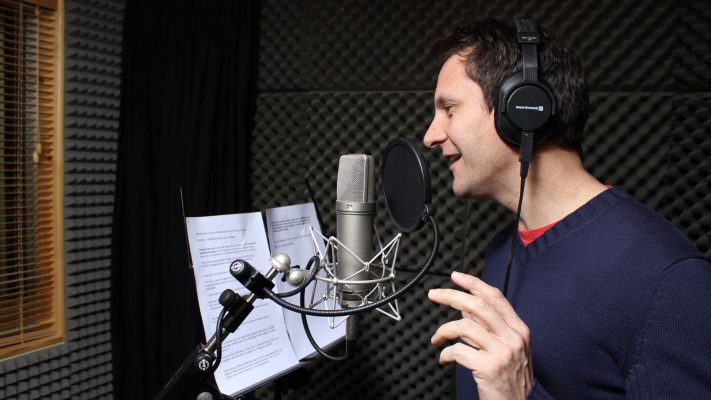Once you have opted to dub your video project in a different language from its original, selecting the right localization provider is key.
We’re often asked about dubbing vs. subtitling a video or film. There are many reasons to choose dubbing over, or in addition to, subtitling:
- Some markets simply require dubbing. In France, for example, dubbing films or videos is the norm.
- Children’s programming is always dubbed for obvious reasons.
- Visual films or videos such as nature documentaries that are heavily narrated are usually dubbed.
- In some instances, both dubbing AND subtitling are recommended, i.e. when a great deal of information is being communicated as in instructional videos for highly skilled procedures.
Steps of the dubbing process
Once you have opted to dub your video project in a different language from its original, selecting the right localization provider is key. A professionally made dub is one of the intended audience does not notice. Anything less and the dub risks ruining the entire viewing experience.
You’ll want to ask your prospective video localization provider about their process. Here are the typical steps involved in the creation of a good alternate language track (or “dub”) for your film or video:
- A video master is sent to the localization provider, including a script, the video, and an M&E (either stereo or 5.1 and stereo).
- The provider should clarify the technical specs required for the master elements.
- If you don’t have a script, the provider will transcribe the dialogue.
- A dubbing stem script is created. It is analyzed frame-by-frame, with every pause in the dialogue; taking into account tonal inflections and general tenor to ensure the nuance of the performance is transmitted to the translators.
- A low-resolution reference file of your video and master script is sent to the target-language team who may reside in-house but often work off-site.
- Specialized translators then work with the dubbing script to translate it and adapt it by matching the length of each line of dialogue to the original script.
- Expert localization providers use algorithms to count the syllables of the script in the original language. This is key for the adaptation of the translated script to the exact timing and tempo of the original language recording. This is especially important for precise lip-syncing.
- Some languages tend to have longer words or idiomatic expressions. A good dubbing translation will look to preserve both length of locution and the meaning of the original dialog.
- Voice-casting usually occurs while translators tackle the script.
- QC editors work with the dialogue in the target language to ensure the lip-syncing to the video is accurate and well-timed.
- In some instances, selective technical adjustments are made to imperceptibly slow down or speed up the video in order to improve upon the lip-sync of the dub. This will ensure that the actors’ voice-over recordings match the mouth movements exactly. It takes patience and a meticulous eye but will make all the difference in the final product.
- Following the thorough preparation of the script, the voice talent and directors go into the recording studio. Directors work closely with translators and will, at this stage, have combed through the script for subtle nuances. They guide the actors to tonal, intonation, linguistic accuracy, and expressive excellence.
- Finally, sound engineers create a mix that incorporates the M&E tracks and is “laid back” to the original video. You now have a professionally created dub!
Some Thoughts Regarding Best Practices
Dubbing is a multi-layered post-production project. If lip-syncing is required, recording time needs to be scheduled as efficiently as possible and all processes leading up to it need to be meticulously planned and executed.
Process, Process, Process
An expert dubbing localization provider will have a Project Manager assigned to you who will have a good handle on the entire process and should clearly lay out detailed timelines and responsibilities. Attention to detail, and awareness of all the different moving pieces and deadlines… should be the Project Manager’s job, not yours.
Pay Attention to Voice Casting and Smart Direction
Depending on the type of content being dubbed, the appropriate voice tonality and the voice actor’s style can make or break a dub. The genre dictates the actor. A comedian will do great in a comedy. A business expert is better suited for a corporate video. Recording directors often handle the casting. Their expertise will be key to your project. Ask for voice samples, and talk to the director if you need to get comfortable.
Good Translation and Adaptation are Critical
Dub is not simply translating a script and then reading it over the existing video. Preserving meaning is paramount, whether through translation or atmospheric reflection of the mood of the original content. For example, if there’s a dockworker from the East End of London, the actor dubbing for Russia needs to speak with a working-class accent from Moscow. The flavor of the original content must always be respected.
The Best Outcome Takes Time
Irrespective of the type of content being dubbed, doing things right takes time while doing them wrong first takes even longer. One way to avoid the latter is to hire a localization provider with a proven track record and a commitment to their industry. Their passion for the work should be palpable!





